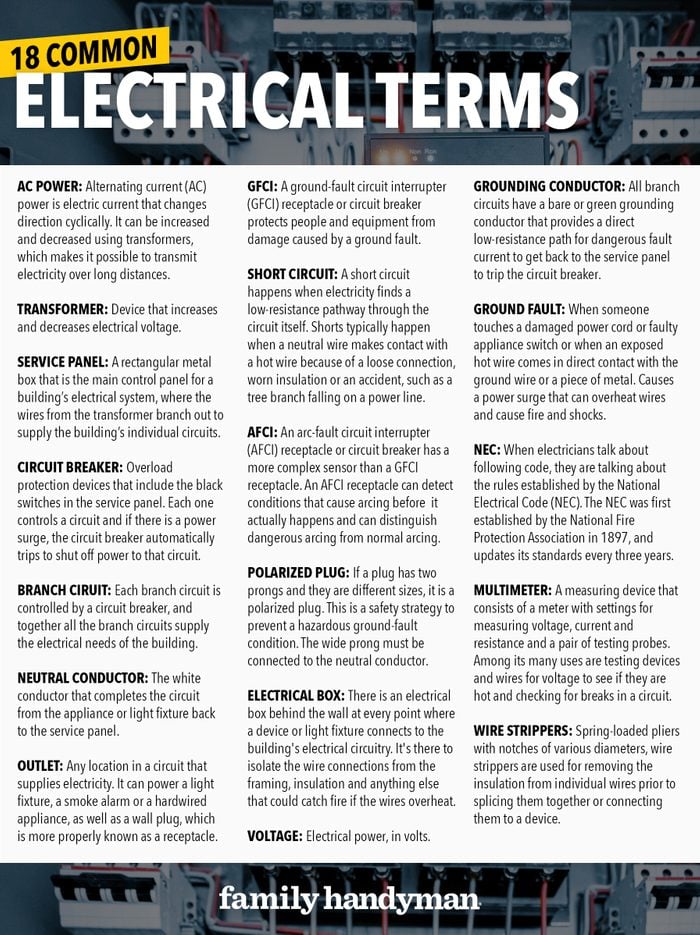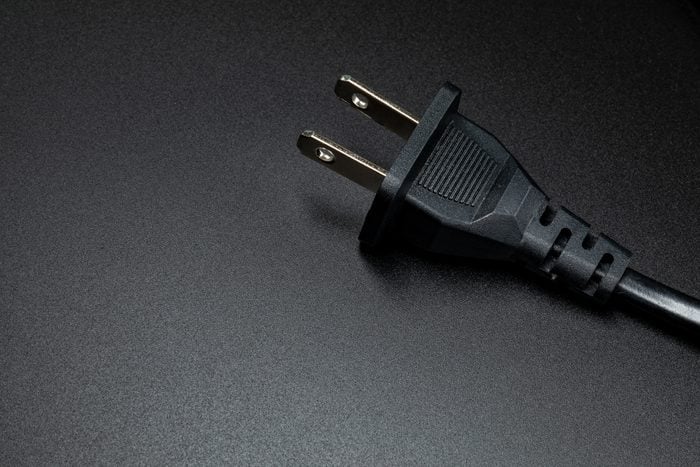
AC Power
One of the most important electrical terms to know is AC. Ever since the Tesla-Westinghouse power plant at Niagara Falls came online in 1885, alternating current (AC) power has been the standard in North America and eventually the rest of the world.
Alternating current changes direction cyclically because it’s produced by a spinning turbine. This means that AC current has a characteristic frequency. In North America, it’s 60 cycles per second.
Unlike direct current (DC) voltage, AC voltage can be increased and decreased via transformers. This makes it possible to transmit electricity over large distances. Centralized generating stations using wind, solar, water, nuclear fuel or fossil fuels can power communities hundreds of miles away.
Understanding AC electrical terminology can help homeowners understand how power comes into the house, what happens when it gets there, and how to work with it.
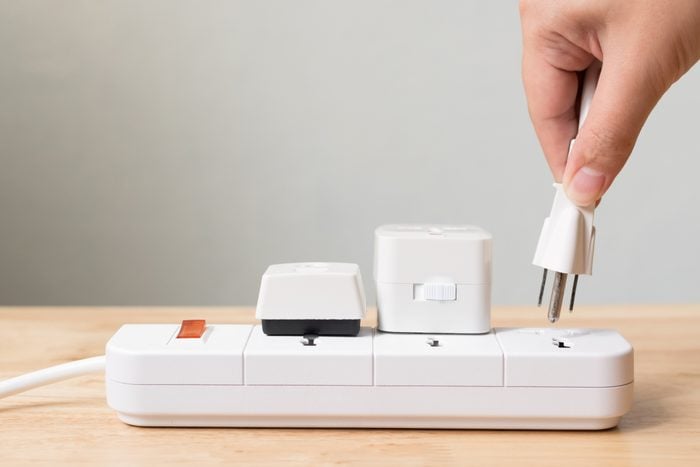
Voltage
John Williamson, the electrical operations supervisor for the Minnesota Department of Labor and Industry, compares voltage in an electrical circuit to the pressure exerted on water flowing through a pipe. Just as higher pressure increases the volume and flow rate of water through the pipes, increasing the voltage produces more electrical power.
The voltage from an AC power generator isn’t constant, as it is from a DC source like a battery. It peaks and dips during each cycle. To compare it to the constant voltage from a DC power source, electricians calculate an average nominal voltage. This is the AC voltage (VAC) you see displayed on labels for appliances and electrical devices.
In North America, any device that plugs into a standard wall outlet is rated for 120 VAC. However, because of the voltage fluctuations, the actual operating voltage ranges from 110 to 125 VAC.
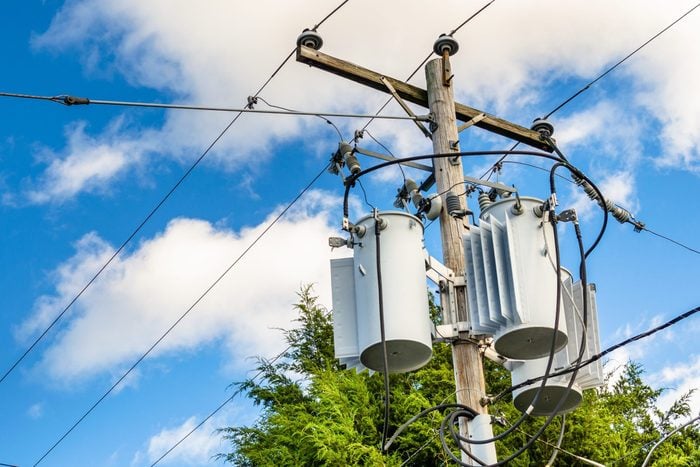
Transformer
The transformer is most responsible for making the electrical grid what it is today. This transformer is a device that can increase and decrease electrical voltage.
If you’ve ever driven by an electrical generating plant, you’ve seen the multiple large cylinders connected to the outgoing power lines. If you look at the power lines outside your house, you’ll see a similar, much smaller cylinder. These are transformers. The large ones at the power plant increase voltage to several thousand volts, while the smaller ones on the power lines decrease voltage for use inside buildings.
Many electronic devices also have a transformer to decrease residential voltage to a level safe enough for their sensitive circuitry. The transformer is in the square box at the end of the wire where the plug prongs attach.
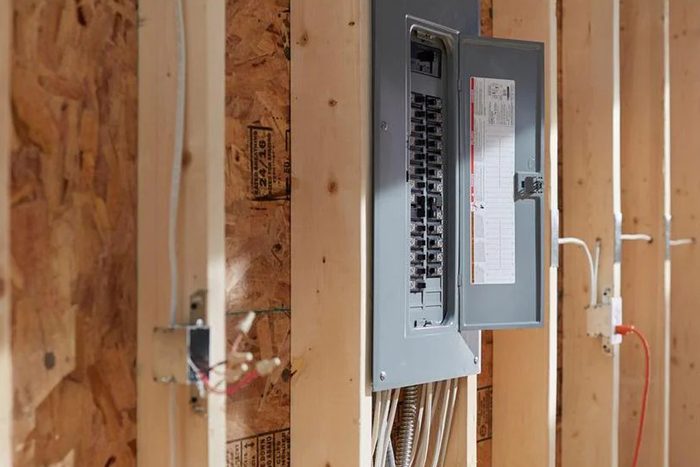
Service Panel
The service panel is the main control center for the electrical system, where the wires from the transformer connect and branch out to supply the individual circuits in the home. It’s a rectangular metal box with a door revealing the circuit breakers for all the individual circuits.
Each of the hot wires supplying electricity to the home from the utility line transformer connects to a copper or alloy bar in the back of the panel. These are called hot bus bars, and the circuit breakers for all the circuits in the house connect to them.
Electricity can flow only if it has a complete circuit, so the panel includes a neutral terminal to provide an electrical return path back to the transformer. It also includes a wire that leads to earth so all electrical devices in the house can be grounded.
The panel is usually in the basement, in a closet or outside, and you’ll need access to it whenever you’re trying to solve electrical problems. It needs to be easy to reach so keep the space in front of it clear.
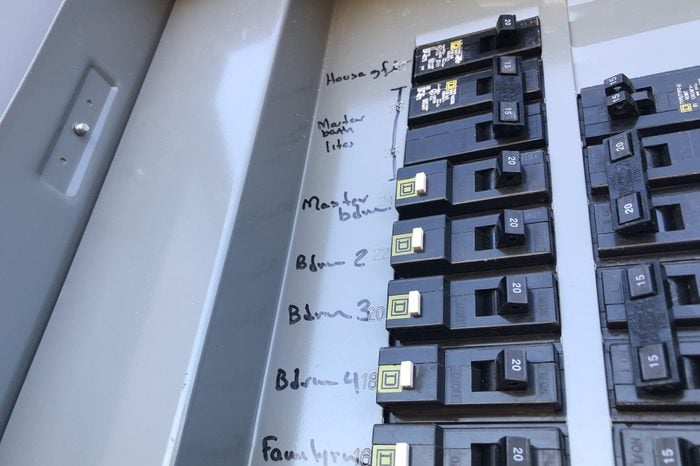
Circuit Breaker
That array of black switches inside your home’s service panel represents all the electrical circuits in the home. Each switch is part of a device known as a circuit breaker. If your house was built before 1950, it may still have a fuse box. Fuse boxes employ screw-in fuses instead of switchable breakers.
Circuit breakers are overload protection devices. Each connects to one of the panel’s hot buses and controls a circuit with one or more light fixtures or wall plugs. If the circuit experiences a sudden current surge, the breaker will trip to prevent a home fire.
Each breaker has a characteristic ampacity, the maximum current it will allow without tripping. Ratings of 15 and 20 amps are most common for 120-volt breakers. Large appliances that operate at 240 volts have double-pole breakers most commonly rated from 20 to 60 amps.
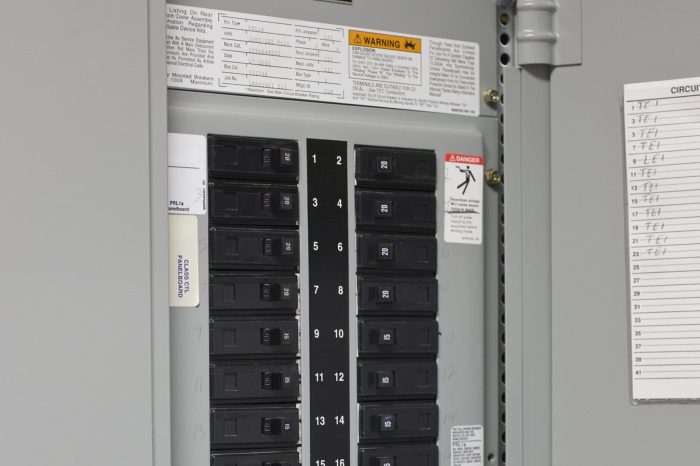
Branch Circuit
If you think of the service panel as the trunk of a tree, it’s easy to visualize branch circuits as the branches. Each branch circuit is controlled by a circuit breaker. Together all the branch circuits supply the electrical needs of the building.
The electrical code includes three types of branch circuits. One is the all-purpose circuit that supplies power to receptacles and lighting outlets. Another is the appliance circuit that powers appliances, but not lights. The third is the individual circuit, also known as a dedicated circuit, that powers a single appliance.
Appliance circuits are generally required in the kitchen and sometimes in other rooms as well. Dedicated circuits are required for some large appliances, including the central air conditioner, electric range and water heater, among others.
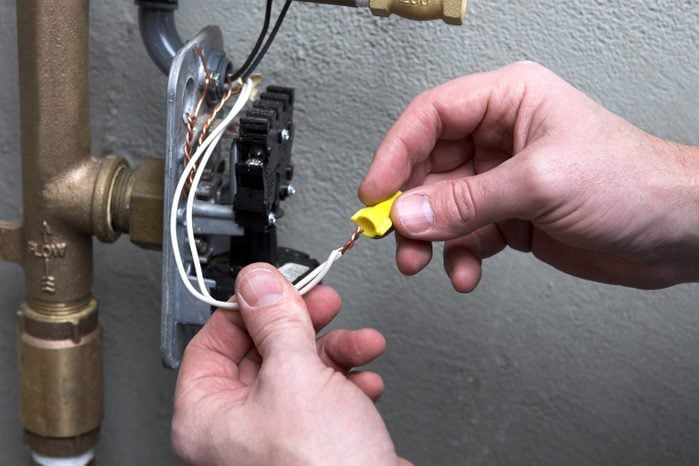
Neutral Conductor
If you connect a device such as a light to a battery, the hot conductor is the wire that leads from the battery’s positive terminal to the light. The neutral conductor is the one that leads back to the battery’s negative terminal. It has to be there to complete the DC circuit or the light won’t work.
Current rapidly changes direction cyclically in AC circuits, and both conductors from the power line are hot. Between these two hot conductors, you would measure 240 volts. However, between each one of the hot conductors and the neutral conductor, you would measure 120 volts.
Most branch circuits in a house run on 120 volts. The National Electrical Code (NEC) specifies the neutral conductor in electrical cables must be white. The NEC doesn’t specify a color for hot conductors, but they are usually black or red.

Grounding Conductor
Besides the neutral terminal, the electrical panel also contains a grounding terminal. It’s typically connected to a metal rod pounded into the ground outside of the home, but it could also connect to a copper water pipe that runs under ground. All branch circuits have a bare or green grounding conductor that connects to the grounding bus.
The electrical code recognizes both system grounding and equipment grounding as safety concerns. Grounding the electrical system to earth helps stabilize supply voltages during normal operating conditions. Moreover, it hopefully directs the current surge from a lightning strike to earth so it doesn’t damage anything.
Electrical equipment grounding provides a direct low-resistance path for fault current back to the electrical panel to blow a fuse or trip a circuit breaker. The grounding conductor runs continuously through the circuit, connecting to every device and every metal electrical box.

Ground-Fault
Even with grounded circuitry, it’s possible for electricity to find a path to ground through someone’s body or a loose wire connection. This can happen when someone touches a damaged power cord or faulty appliance switch, or when an exposed hot wire comes in direct contact with the ground wire or a grounded piece of metal. This is known as a ground-fault. It creates a current surge that can overheat wires, damage electrical equipment and cause shocks.
One of the most well-known instances occurs when someone standing on a wet floor touches an appliance with an exposed electrical connection. Electricity can then use the person’s body to ground itself, and the person receives a nasty — perhaps fatal — shock. Standard 15- and 20-ampere circuit breakers are designed to trip when such current surges occur, but they don’t always stop people from receiving electrical shocks.
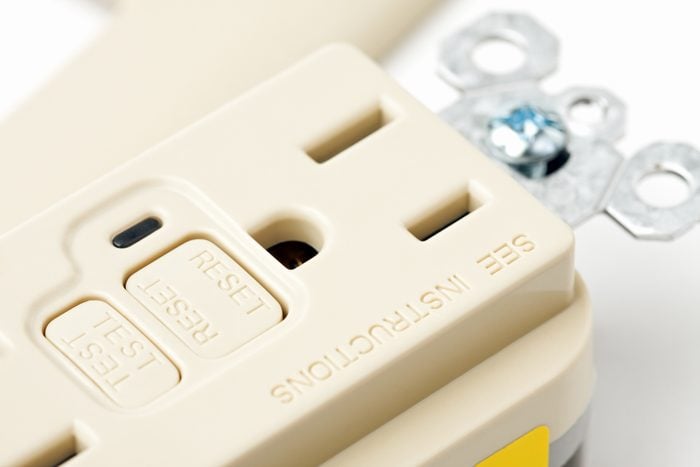
GFCI
A ground-fault current-interrupting (GFCI) receptacle or circuit breaker protects people from injury and equipment from damage caused by a ground-fault. A GFCI is much more sensitive to the current surge caused by a ground-fault than a conventional circuit breaker and will trip when it detects a current surge of 5 mA (milliamps) or more. Electrical currents higher than 5 mA can cause the human heart to fail.
GFCI receptacles have two buttons on the face plate. One is for testing the internal mechanism, and the other for resetting the mechanism after it trips. The NEC requires GFCI receptacles in kitchens, bathrooms, laundry rooms and outdoors — anywhere water (a good electrical conductor) is present. GFCI receptacles are gradually being replaced by GFCI breakers, which protect entire circuits from a central location in the service panel.
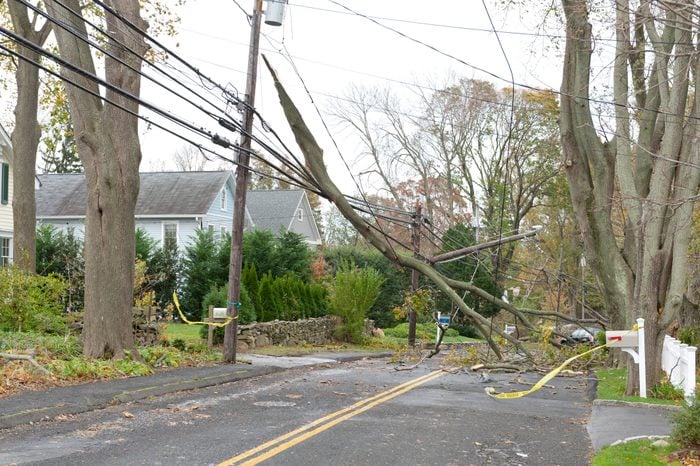
Short Circuit
Like a ground-fault, a short circuit causes a current surge, but it happens for a different reason. A ground-fault occurs when electricity finds an unintentional pathway to earth. A short circuit happens when electricity finds a low-resistance pathway through the circuit itself.
Shorts typically occur when a neutral wire makes contact with a hot wire because of a loose connection, worn insulation or an accident, such as a tree branch falling on a power line.
The current surge caused by a short circuit usually trips the breaker. If that happens too slowly, the surge can instantaneously heat the wires to several thousand degrees F. If the wires are close but not touching, electrical arcing can also occur. Arcing turns the air into ultra-hot plasma that can quickly ignite a fire.
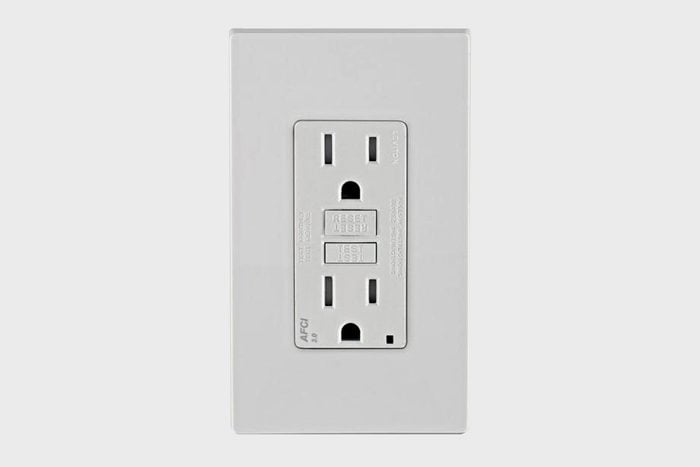
AFCI
Electrical arcing and a ground-fault are different phenomena. As such, the devices to protect against them are also different, although they have similarities.
An arc-fault current interrupting (AFCI) receptacle has the same two buttons as a GFCI, but a more complex sensor. It doesn’t just detect conditions that can cause arcing before the arcing actually happens. It can also distinguish dangerous arcing from the normal arcing that occurs when you flip a switch, turn on a light or start an appliance.
The purpose of arc fault protection is to prevent fires, and the NEC has steadily increased the number of rooms in which AFCIs are required to cover practically the entire house. It’s becoming standard practice to install dual-function AFCI/GFCI breakers in the main service panel rather than individual combo receptacles throughout the house. It’s cheaper that way, and breakers provide more comprehensive protection.
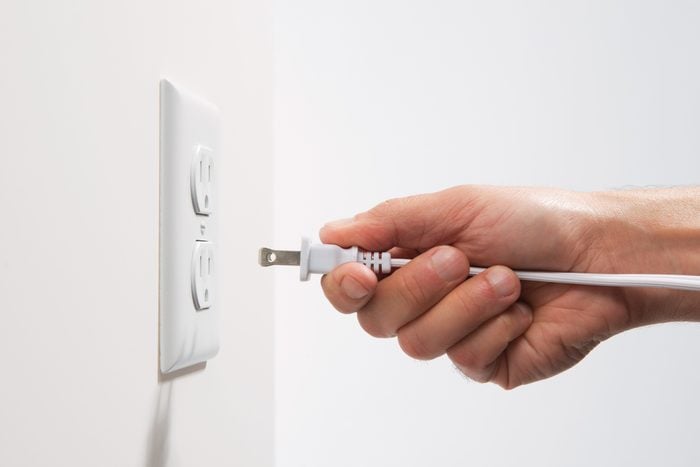
Polarized Plug
Some appliance plugs have only two prongs. If they’re different sizes, the plug is polarized. It will only plug into a receptacle with slots the same sizes as the prongs. Plus, you can only insert it in one direction. This is a safety strategy to prevent a ground-fault condition. The wide prong must be connected to the neutral conductor.
Appliances and portable lamps with polarized plugs are internally wired so the hot leg of the circuit terminates at the switch. Only after you engage the switch will power flow to the internal machinery or light bulb.
A good example is a table lamp. The wide prong connects to the neutral conductor of the circuit. This in turn connects to the metal screw threads of the lamp socket. The hot wire, via the switch, connects to the brass knob on the bottom of the socket where no one can touch it. If the wiring were reversed, you could get a shock when changing a light bulb or groping for the lamp switch in the dark.
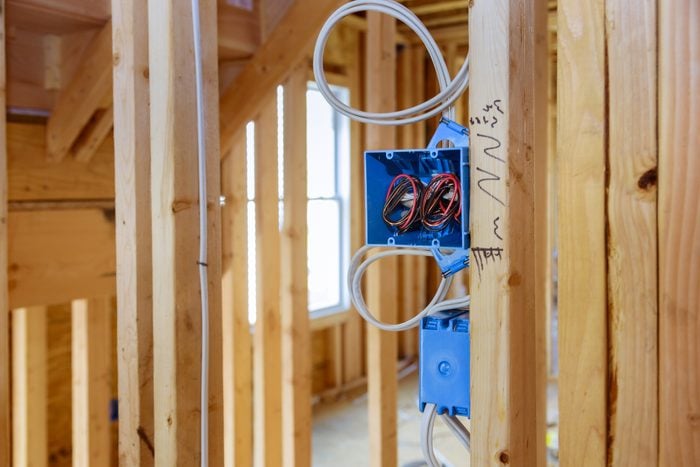
Outlet
Certain electrical terms mean different things to laymen and tradesmen. People usually refer to a wall plug as an outlet, but that isn’t what electricians mean by the term. An outlet is any location in a circuit that supplies electricity. It can power a light fixture, a smoke alarm or a hardwired appliance, as well as a wall plug, which is more properly known as a receptacle.
Electrical outlet box locations are typically established during the rough-in phase of electrical wiring, before drywall covers the framing. The electrician runs cable to the outlet box locations and secures it inside the electrical box as required. The electrician then circles back to make-up all the wires and splices inside the outlet boxes and add labels.
After the walls have been covered, the electrician simply connects the prearranged wires to whatever device, light fixture or appliance that is supposed to be installed at that location.
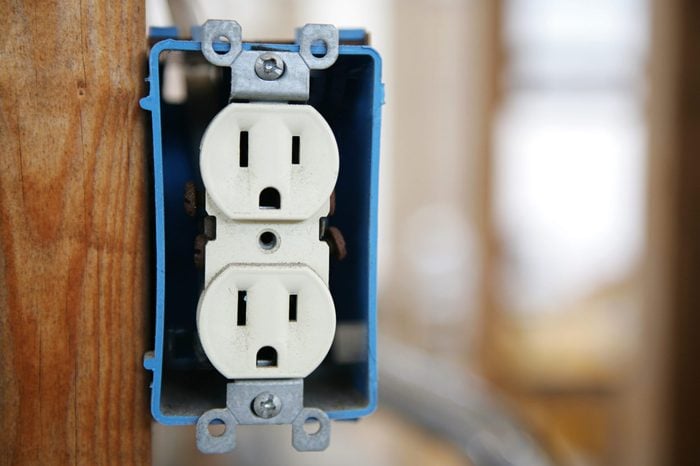
Electrical Box
Unless you know what an electrical box is, you might not even know it’s there. But there’s one at every point in the house where a device or light fixture connects to the building’s electrical circuitry. This is an NEC requirement. It isolates the wire connections from the framing, insulation and anything else that could catch fire if the wires overheat.
The simplest electrical boxes are round or rectangular, made of plastic and typically nailed to the framing. Metal boxes are required for some devices, and these have a ground screw so they can be connected to ground.
When installing a new device onto an existing electrical system, it’s common to use a remodeling box, a shallow plastic box (plastic doesn’t need to be grounded). It has anchors that allow you to attach it to drywall instead of to the framing.
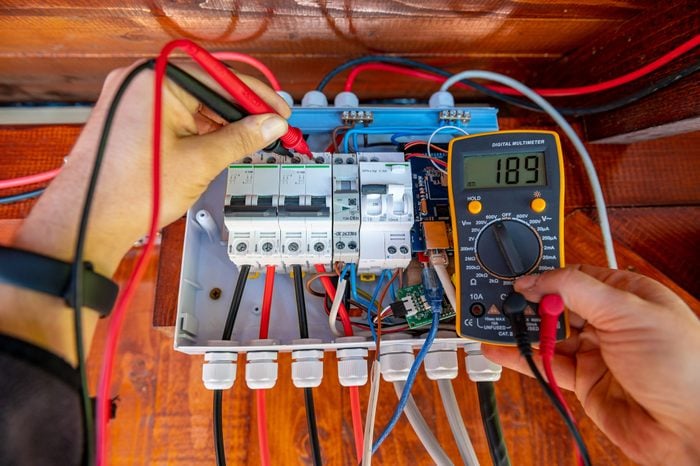
Multimeter
Some electrical terms refer to the actual electricity, while other electrical terms refer to tools. A multimeter is one of the most powerful diagnostic tools in an electrician’s tool belt. This inexpensive measuring device consists of a meter with settings for measuring voltage, current and resistance and a pair of testing probes. Its many uses include testing devices and wires for voltage to see if they are hot, and checking for breaks in a circuit.
To conduct a voltage test on a device such as a switch, the power must be on and the switch connected to the circuit. The meter checks voltage between the hot and neutral or grounding connections. The test for a circuit breaker or fuse is called a continuity test. It’s conducted with the power off and the part of the circuit being tested isolated from the rest of the circuit. The meter sends a small current through the circuit and measures the resistance.
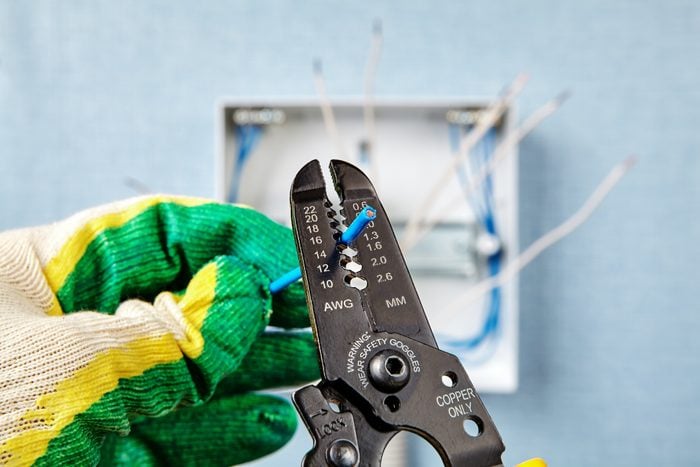
Wire Strippers
Wire strippers are another important electrician’s tool, and any DIY homeowner doing electrical work should have some. A set of spring-loaded pliers with notches of various diameters, wire strippers are used for removing the insulation from individual wires prior to splicing them together or connecting them to a device.
The notches on the jaws of a pair of wire strippers are graduated to fit almost exactly around wires of various gauges. Clamp the appropriate notch around the wire that needs stripping. Next, rotate the jaws to cut through the insulation. Then use the serrated tip to pull off the insulation. This is much faster than stripping the insulation with a knife, and it’s safer and more accurate.
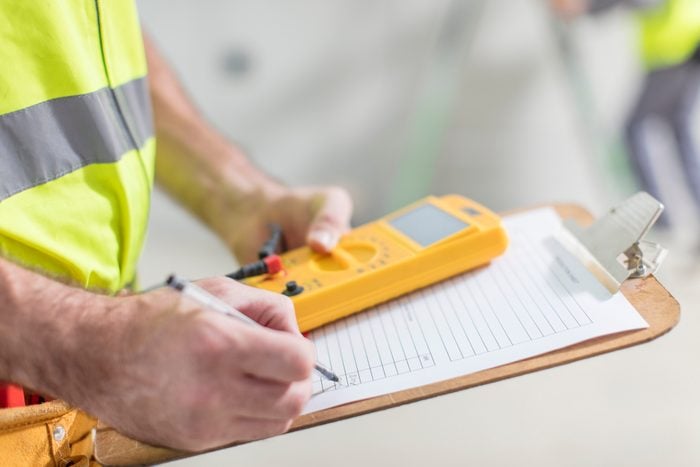
NEC
One item on our list of electrical terms isn’t a tool or a type of power. When electricians talk about following “code,” they’re talking about the National Electrical Code (NEC). The NEC was established by the National Fire Protection Association (NFPA) in 1897, and its rules and standards are updated every three years.
The NEC isn’t federal law, but it has been adopted by all 50 U.S. states, as well as by authorities in Mexico and other countries around the world. Revisions to the code apply primarily to new construction and remodeling. Except for a few provisions it’s generally not retroactive. That means wiring installed under a previous edition of the code can generally remain as long as it’s in good working condition and safe to use.
However, since safety is the main purpose of the NEC rules and standards, any homeowner considering changes to their electrical system should consult with an electrician. This way they can ensure the changes conform to today’s code.
